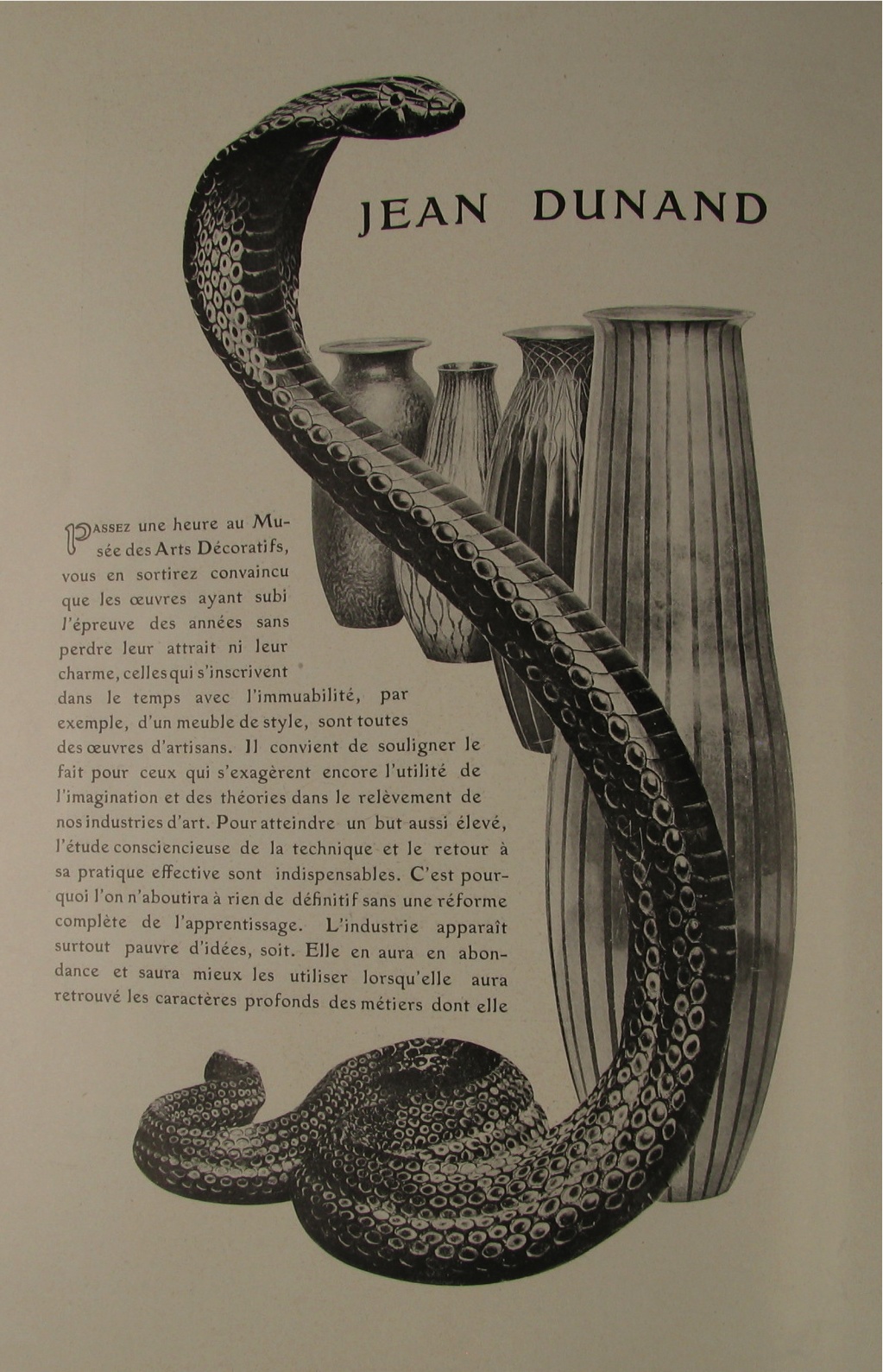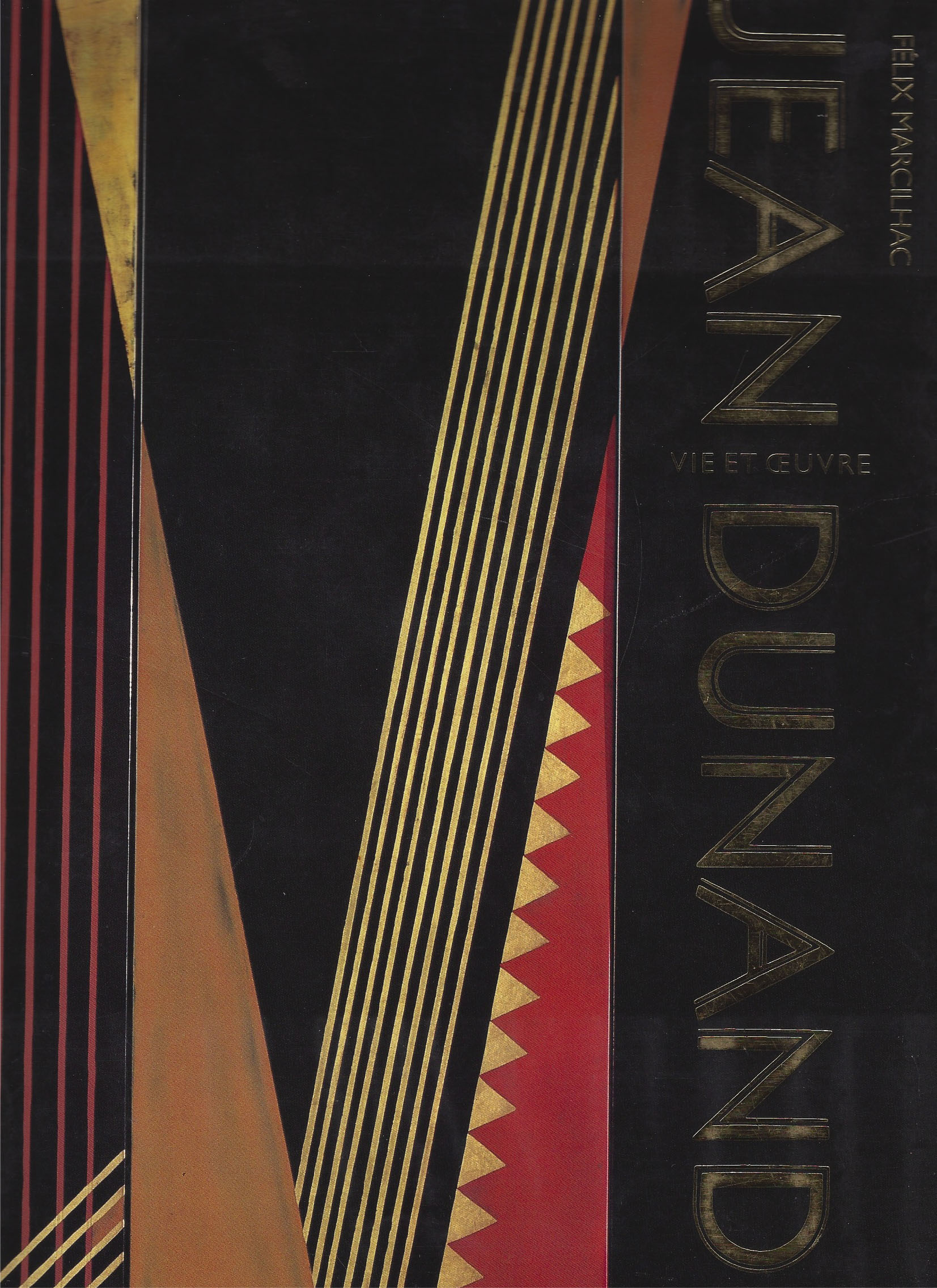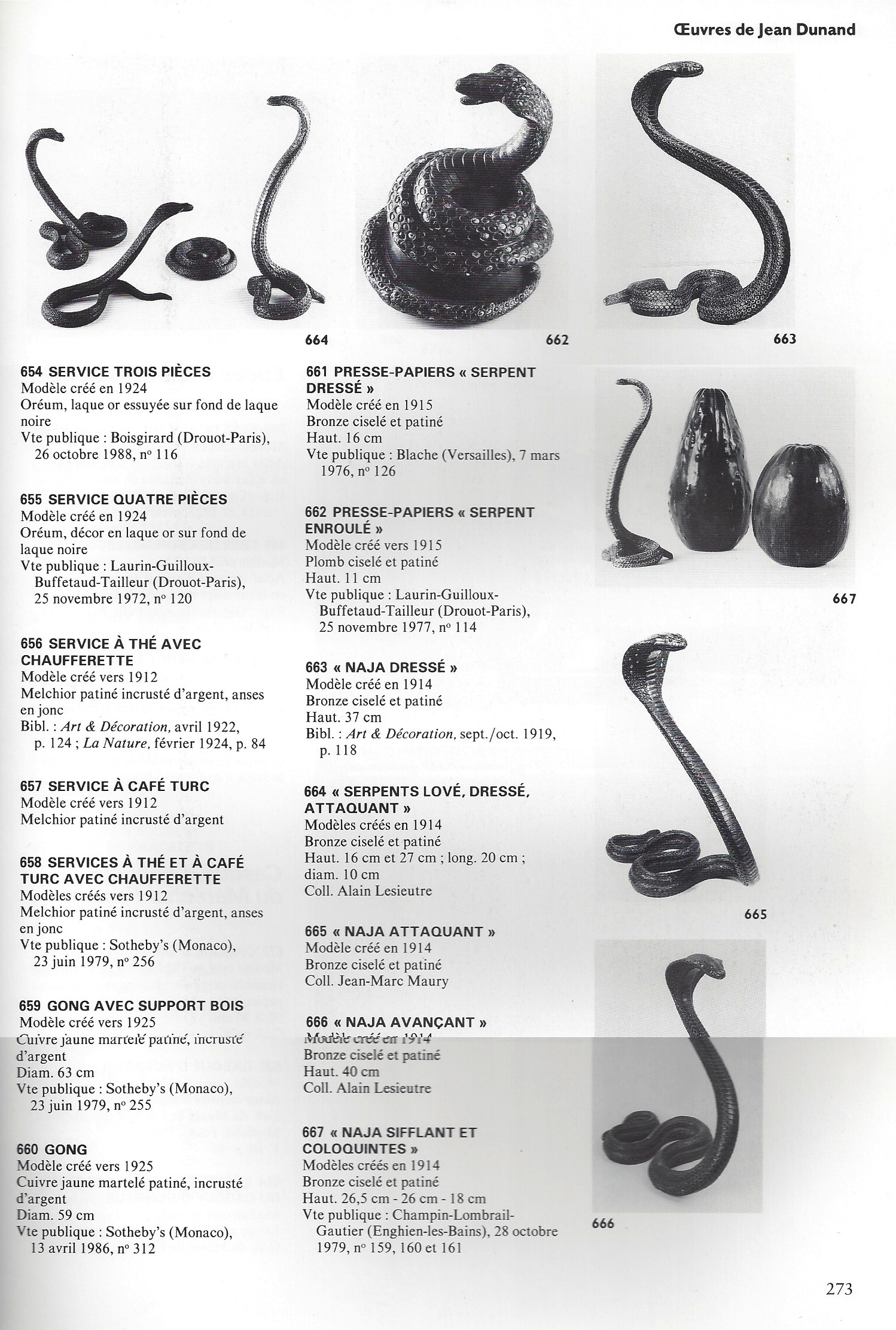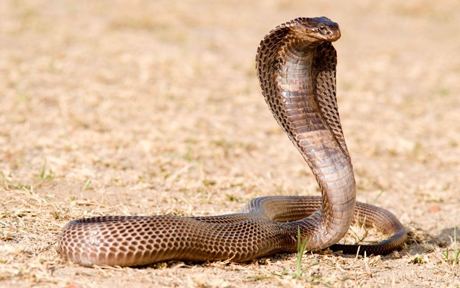Serpent Dressé, A Patinated Bronze Sculpture of a Cobra
By Jean Dunand, circa 1914
Stamped JEAN DUNAND and numbered 7929 and overstruck M
4 ⅞ in (12.5 cm) high, 3 in (7.6 cm) wide, 7 in (17.8 cm) deep
Provenance
The collection of Gunter Sachs
cf. Félix Marcilhac, Jean Dunand: Vie et Oeuvre, 1991, p. 273, no. 664
Jean Dunand was born in Lancy, Switzerland in 1877. He studied drawing, sculpture and metalwork at the School of Industrial Arts in Geneva. He then moved to Paris in 1897 at the age of 20 where he was trained in a range of different mediums. Dunand was introduced to Jean Dampt, a well-known sculptor and decorative artist with whom he worked for several years. It was during this period that he learned to work with many materials, including ivory, wood, stone and metal.
The first work that Dunand exhibited was a wooden bread box sculpted with wheat motifs. This appeared in the objects or art section of the catalogue for the Salon de la Société Nationale des Beaux-Arts in 1903. While working with Dampt, Dunand made many trips back to Switzerland where he studied the complexities of hammering metal, learning from a coppersmith named Danhauer.
The second period of Jean Dunand’s work began in 1905, the year in which he presented the first in a group of many metal vases and objects that were ‘formed and hammered in a single piece’. His training as a sculptor is evident in the skilful modelling of this snake, while the confident handling of the metal demonstrates his abilities as a craftsman.
Other snakes by Dunand are held in the collections of the Metropolitan Museum of Art and the Musée d’Orsay.
The first work that Dunand exhibited was a wooden bread box sculpted with wheat motifs. This appeared in the objects or art section of the catalogue for the Salon de la Société Nationale des Beaux-Arts in 1903. While working with Dampt, Dunand made many trips back to Switzerland where he studied the complexities of hammering metal, learning from a coppersmith named Danhauer.
The second period of Jean Dunand’s work began in 1905, the year in which he presented the first in a group of many metal vases and objects that were ‘formed and hammered in a single piece’. His training as a sculptor is evident in the skilful modelling of this snake, while the confident handling of the metal demonstrates his abilities as a craftsman.
Other snakes by Dunand are held in the collections of the Metropolitan Museum of Art and the Musée d’Orsay.




















